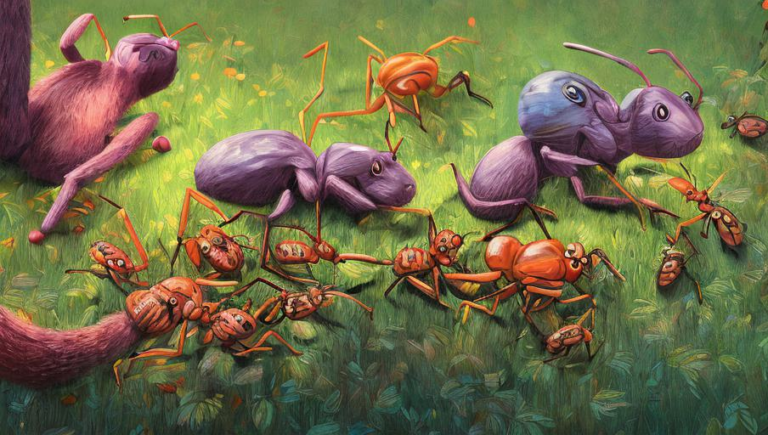Juggling with Defense Mechanisms: A Caterpillar’s Survival Tactics

Camouflage: A Caterpillar’s First Line of Defense
When it comes to protecting themselves, caterpillars are masters of disguise. They are adept at camouflaging their bodies to blend in with their surroundings, making them difficult to spot. Many caterpillars have the ability to change their color and texture, making it hard for predators to spot them. Some caterpillars have evolved to mimic the color and pattern of other insects in the area, giving them an added level of protection.
In addition to color-changing, caterpillars also use other methods to disguise themselves. Some species have evolved to look like twigs or leaves, helping them blend in with their environment. Others will curl up and play dead when threatened, while some are even able to mimic the movements of ants or beetles to blend in with the crowd.
Toxic Defenses: A Last Resort
When camouflage and mimicry fail, caterpillars turn to their last line of defense: their toxins. Many species of caterpillar are covered in urticating hairs that can cause a painful reaction in predators. These hairs are filled with a toxic liquid that can cause skin irritation and even blindness in some cases. In addition to urticating hairs, some caterpillars have evolved to produce noxious odors when disturbed, making them unappealing to predators.
The toxins that caterpillars produce are not only used for defense. They are also used to deter parasites and diseases, helping the caterpillar stay healthy throughout its life cycle. The toxins can also help in the digestion process, aiding the caterpillar in breaking down food into usable nutrients.
Adaptive Strategies: A Caterpillar’s Key to Survival
Caterpillars have adapted to a variety of threats in their environment and have evolved a wide range of strategies to protect themselves. From camouflage to toxins, caterpillars are well-equipped to evade their predators and survive in their habitats. It’s no wonder they are able to thrive in a variety of habitats, from forests and grasslands to deserts and even urban areas.
The next time you spot a caterpillar, take a moment to appreciate its unique and adaptive defense strategies. It’s a testament to the power of evolution and the resilience of nature.





